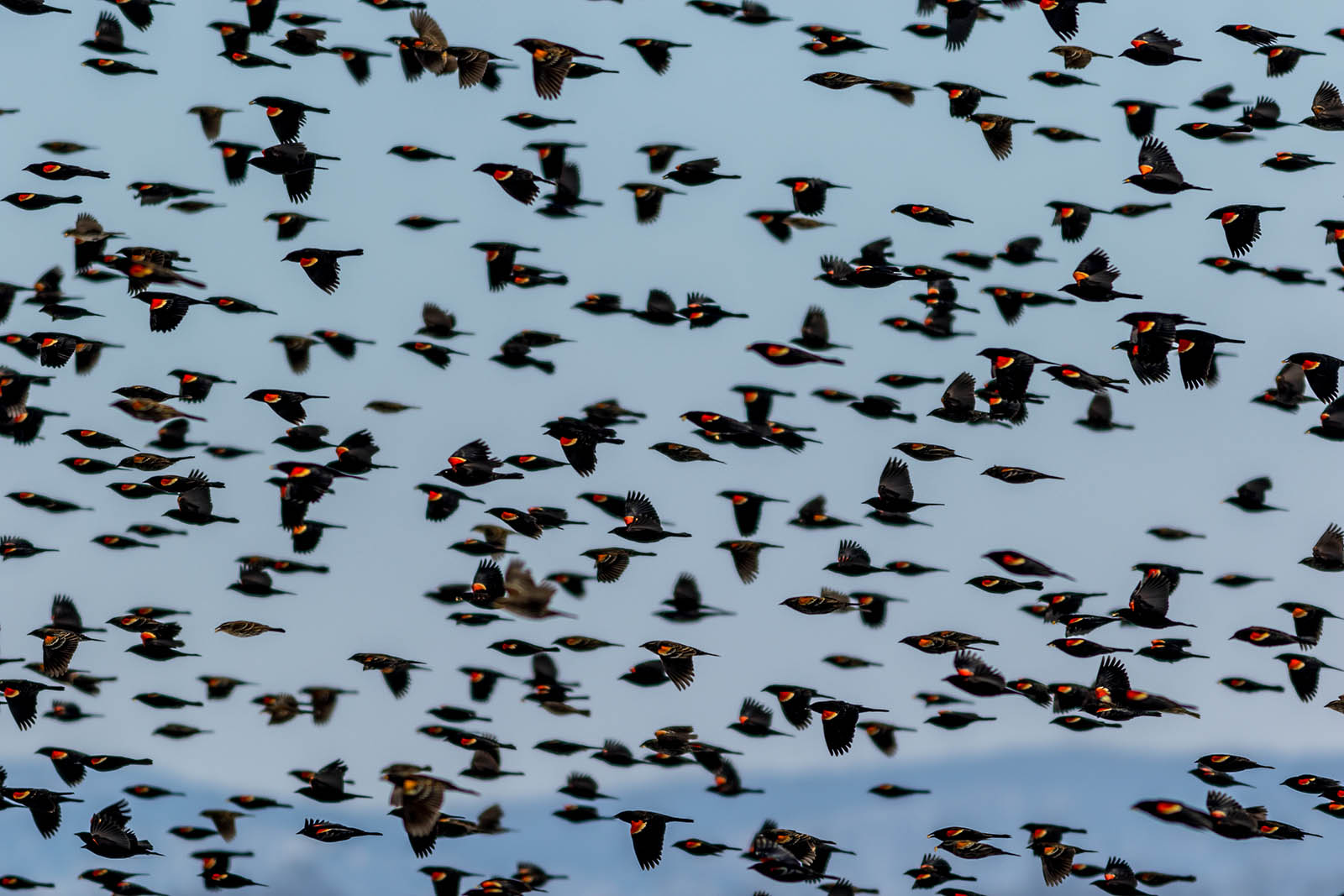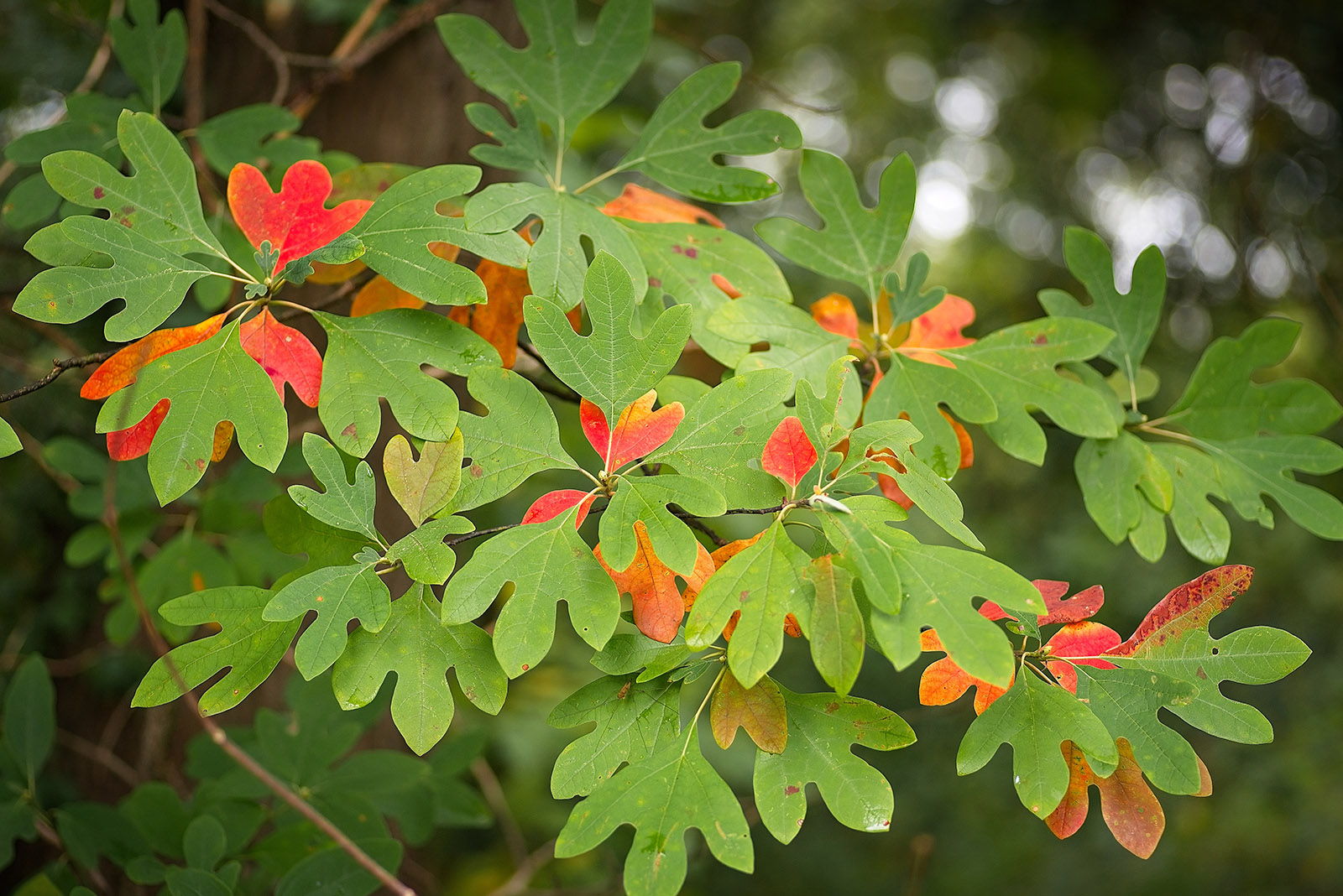By Stephen Living/DWR
As the season turns from summer into autumn, millions of birds will pour through Virginia on their migration south. Some birds will overwinter in the southern United States, while others will travel thousands of miles to South America. This is a challenging trip that can include long stretches over the open ocean. Successfully completing this journey requires that birds rely on habitats that provide the food needed to fuel them.
For many songbirds, one of the most important food sources is native fruits. These provide quick energy in the form of sugar but are also rich in fats that can provide long-term fuel. In addition to great nutrition, fruits have an additional benefit—you don’t have to chase them! Many birds feed on insects, but chasing and catching them takes energy that birds might not be able to spare during migration. Migration can be a dodgy thing; while the airspeed velocity of a swallow may not be fully understood, we do know that migration is demanding. Weather fronts can make the journey even more challenging and running out of energy reserves while flying over the ocean spells trouble for a bird.
 Managing habitat for the migrants means ensuring that there is enough stop-over habitat. Basically, migrating birds need natural areas where they can stop, rest, and quickly refuel. Virginia’s Eastern Shore is recognized as part of an Important Bird Area for the entire Eastern Hemisphere as birds pour down the East Coast and funnel to the southern tip of the Delmarva peninsula. The Virginia Department of Wildlife Resources (DWR) will manage the newly acquired Coastal Wildlife Management Area (WMA) on the Eastern Shore in part to provide for these migrating birds. The habitat management on these tracts will focus on fostering the growth of native plant communities that help feed millions of hungry, migrating birds.
Managing habitat for the migrants means ensuring that there is enough stop-over habitat. Basically, migrating birds need natural areas where they can stop, rest, and quickly refuel. Virginia’s Eastern Shore is recognized as part of an Important Bird Area for the entire Eastern Hemisphere as birds pour down the East Coast and funnel to the southern tip of the Delmarva peninsula. The Virginia Department of Wildlife Resources (DWR) will manage the newly acquired Coastal Wildlife Management Area (WMA) on the Eastern Shore in part to provide for these migrating birds. The habitat management on these tracts will focus on fostering the growth of native plant communities that help feed millions of hungry, migrating birds.
Fortunately, as bird migrations are ramping up, a number of native wild fruits are becoming ripe. Research has shown that not only do native plants provide better nutrition for migrating birds, but also that birds actually prefer them. Plants like devil’s walking stick, pokeberry, and wild grape all provide great resources for birds and other wildlife. Many of these plants may end up growing in your yard on their own (planted courtesy of the birds that ate the berries). Of the many native wild fruits that can be found, one is hands-down a favorite of and superfood for birds—sassafras!
Sassafras (Sassafras albidum) is a fast-growing, small to medium tree that is typically found in hedgerows, open woods, or along the edge of forests. It’s tolerant of a variety of conditions from full sun to partial shade and can even tolerate relatively poor soils. It is somewhat unique in that it has three different leave shapes: oval, three-lobed, and a two-lobed, mitten-shaped leaf. Crush these leaves and the spicy scent of this tree is obvious. The fruits are beautiful in and of themselves with blue-black berries held on a bright red stem.

Sassafras foliage. Photo by Shutterstock
In the fall, sassafras puts on a show with leaves turning yellow, red and purple. A number of native insects use the sassafras tree as a host plant, including spicebush swallowtail and Promethea silk moth. Migrating songbirds are looking for the dark blue fruits. These fruits are among the most nutritious for birds and are one of these first they find and eat.
This tree has so many benefits that it was named the 2020 Tree of the Year by the State Arboretum of Virginia at Blandy Experimental Farm! It is native across all of Virginia. Start planning now to plant one for the fall. Fall is the best time to time to plant deciduous trees and shrubs. Sassafras will often spread into a small thicket by roots suckers, but if you prefer a single specimen tree you can train it by removing the suckers regularly. Sassafras grows male and female flowers on separate plants. Be sure to pick a female plant if you want berries, while planting a male tree will help ensure pollination (if there are lots of sassafras growing nearby you don’t need to worry about this). If the plants at your local nursery aren’t old enough to fruit yet, you can plant a root cutting from a female tree to be sure you’ll have berries.
Sassafras isn’t the only native fruit source that is available during fall migration. There are many other native plants providing food for the birds. Some may already be in your space. Plants like devil’s walking stick and pokeweed may pop up on their own. While these may sometimes be thought of as weeds, if you go for a more naturalized look they provide a great wildlife resource. Native vines like Virginia creeper and wild grapes provide food and shelter. There are also many native plants that you can plant to provide for birds and other wildlife. Shrubs like silky dogwood and native viburnums like arrowwood or possumhaw look great, with beautiful white flowers in the summer and berries in the fall.
Wondering what’s native to your area or where you can find native trees and shrubs? Check out Plant Virginia Natives for information about native plants and plant guides specific to your region of Virginia.
Stephen Living is the Habitat Education Coordinator at the Virginia Department of Wildlife Resources.


